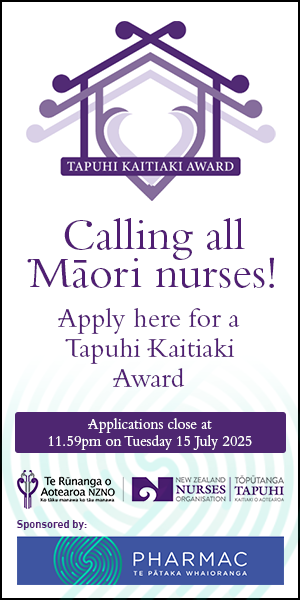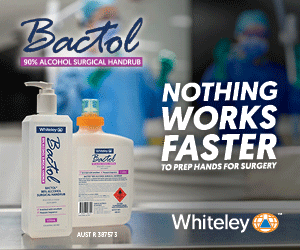Every day, I work alongside dedicated nurses, doctors, midwives, allied health professionals, health-care assistants, and support staff who are all doing their absolute best in a system that is chronically underfunded and stretched past its limits.
For years, successive governments have underinvested in health care while expecting those of us on the frontlines to keep picking up the slack.
They set targets — shorter wait times, faster discharges, quicker surgeries — without giving us the staff, resources or infrastructure to meet those targets. They expect us to do more with less — and it’s reaching breaking point.
Patients can’t even get in to see their GP, with thousands left waiting weeks — if they can get an appointment at all.
That means more people arriving at emergency departments in worse condition, needing urgent care — something that could have been prevented.
Health Minister Simeon Brown has hinted at introducing GP waiting time targets, but targets don’t mean anything if there aren’t enough doctors, nurses, admin teams, and clinics to meet them.
We are losing nurses, midwives, and doctors to Australia and beyond, where they are offered better pay, safer conditions, and a government that actually invests in them.
And when patients finally make it through the hospital doors, there are more barriers.
Without proper funding for radiology, pathology, and diagnostic services, essential tests are delayed, making it harder for clinicians to provide timely care. Without efficient technology systems and administrative support, clinicians are bogged down with paperwork, diverting them from patient care.
NZNO delegate Hilary Gardner speaking at the New Zealand Council of Trade Unions Reimagining Aotearoa Together event this month.
And without initiatives to help reduce the health inequities faced by Māori, they will continue to lead sicker and shorter lives than other New Zealanders.
Elective surgery waiting lists are skyrocketing, with thousands of people waiting far beyond clinically safe time frames. The Government has thrown $50 million at the problem, outsourcing procedures to private hospitals, but specialists across the motu agree this is a band-aid fix that doesn’t solve the underlying issues in the public system.
The people holding this system together — our health-care workforce — are overworked, underpaid, and burning out.
What does this mean in reality?
It means people who should have had a straightforward procedure months ago are now in chronic pain, unable to work, and developing complications that put even more pressure on an already failing system. It means theatre nurses and surgical teams are operating at full capacity, but the bottlenecks in recovery wards, rehab services, and post-operative care mean that the system remains clogged.
Meanwhile, the people holding this system together—our health-care workforce—are overworked, underpaid, and burning out. We are losing nurses, midwives, and doctors to Australia and beyond, where they are offered better pay, safer conditions, and a government that actually invests in them. And who can blame them?
But it’s not just frontline staff feeling the pressure. Health care isn’t just what happens in the emergency department or on the wards — it’s the cleaners who ensure infection control, the orderlies who transport patients, the administrators who schedule appointments, and the social workers who help patients transition back into the community. These are the critical back-office support structures that keep hospitals functioning, yet they’re constantly overlooked, underfunded, and undervalued.
It’s time for our leaders to stop making excuses and start making real investments in the people who keep this country healthy.
Even our physical infrastructure is struggling. Continued delays and funding uncertainties have left staff questioning whether critical infrastructure projects will be completed in time to meet their community’s growing needs. This isn’t just about bricks and mortar—it’s about ensuring we have the capacity to care for people properly.
This isn’t an accident. The state of our health-care system today is the result of political choices—choices to underfund, to under-resource, to ignore the warning signs while expecting frontline staff to somehow keep it all together, and do more with less.
But we don’t have to accept this. Imagine a New Zealand where:
- Every person can see a GP when they need one, preventing unnecessary hospital visits.
- Elective surgeries happen on time, preventing long-term suffering and disability.
- Health-care workers — both frontline and support staff — are paid and supported properly, so they stay in New Zealand rather than leaving for better conditions overseas.
- Hospitals have enough staff, enough beds, and enough funding to meet demand—rather than constantly operating in crisis mode.
- Essential support services like diagnostics, administration, and rehab care are fully resourced, allowing the system to function smoothly.
- Our health sector recognises the Crown’s commitment to Te Tiriti and there are iwi-designed and lead programmes to improve Māori health outcomes.
These aren’t impossible goals. They are achievable — if health care is truly prioritised. It’s time for our leaders to stop making excuses and start making real investments in the people who keep this country healthy.
Because without health-care workers — both frontline and behind the scenes — there is no health care.
- Wellington nurse Hilary Gardner is NZNO-Tōpūtanga Tapuhi Kaitiaki o Aotearoa’s Wellington Hospital delegate. This viewpoint was adapted from a speech she gave at a Reimagining Aotearoa Together event this month, organised by the New Zealand Council of Trade Unions Te Kauae Kaimahi.





